Categories
Latest Updates
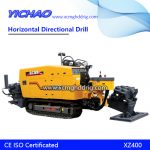
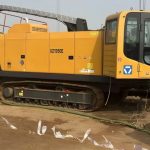
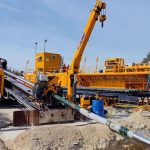
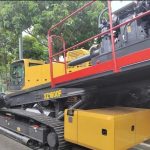
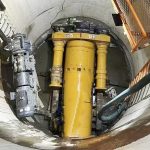
With the aging and damage of the drainage pipes laid and used in the early stage, the trenchless repair of the pipes and the renewal of the pipes have gradually become the more prominent problems currently faced.
With the continuous advancement of the modernization process, the underground pipelines have become increasingly complex, and the load of the roads has become heavier and heavier. hidden danger. If the pipeline is not repaired for a long time, it will pollute the groundwater at light, and cause the road to collapse and traffic to be paralyzed at worst.
Pipeline trenchless repair is to use scientific methods to carry out pipeline repair work without affecting traffic. It occupies less space and has less impact on the ground, traffic, environment and surrounding underground pipelines.
The trenchless pipeline repair technology first emerged in the oil and natural gas industry, mainly used for the renewal and repair of oil and gas pipelines, and later gradually applied to the renovation of water supply and drainage pipelines, and was rapidly promoted with the application of new pipes.
Compared with the traditional re-embedding after excavation, trenchless repair has certain advantages:
(1) Solve the problem of irregular pipeline leakage once and for all, and there is no hidden danger in the safety of pipeline management;
(2) The repair cost is low, about 60% of the newly installed pipeline;
(3) Partial excavation of working pits reduces the amount of road excavation and the impact on the public transportation environment;
(4) The connection is convenient, the construction period is short, no maintenance is required, and it can be repaired and cast immediately;
(5) The repair process is diverse and has a wide range of applications.
(1) Little interference to the environment, traffic, crowded living areas and commercial areas;
(2) Using the route of the pipeline to be repaired, there is no need to apply for a route, and the construction period is short;
(3) The overcurrent capacity of the pipeline to be repaired has little effect;
(4) The exposed surface is small during construction, which improves safety.
The overall advantage of trenchless pipeline repair technology is that the negative impact of repair is small, and the impact on the ground, traffic, environment and surrounding underground pipelines is weak. In the case of no or less excavation of the road surface, the original pipeline location resources are used, and the relevant trenchless pipeline repair technology is used to repair the pipeline, which can prolong the service life of the pipeline and promote the trenchless repair technology in the field of underground pipeline repair. application is imperative.
After more than half a century of development and practice, generally three categories and more than ten kinds of process technologies have been formed, namely the insertion casing method (including the original casing and the folded casing), the coating method, and the hose lining method. Wait.
At present, the more mature and commonly used lining methods mainly include: pipe penetration (insertion) method, in-situ curing method, spiral winding lining method, broken (cracked) pipe method and so on.
The JMPE interpenetration repair method is to insert a PE pipe with a smaller diameter than the original pipe in the pipeline to be repaired under the condition that the diameter of the pipe is reduced and the normal pipeline transportation is not affected.
Process features:
(1) It is suitable for water supply, drainage and gas pipelines of various materials (carbon steel, cast iron, cement, PE, etc.) of DN200-DN2000 diameter.
(2) The lined pipe can independently bear the design pressure of the pipeline, which has low requirements on the original pipeline and can safely extend the service life of the pipeline for 50 years.
(3) The single construction length of PE pipelines can reach 1500 meters, which can effectively solve the pipeline repair problems without excavation conditions such as pipelines near sea, rivers, roads, and railways.
The pipeline repaired by interpenetration can not only increase the strength of the pipeline, but also prevent the leakage and corrosion of the pipeline, and the quality of the repaired pipeline is relatively stable for a long time, which is a quite effective method in the trenchless repair technology.
The CIPP in-situ curing method is to line a layer of thermosetting material on the existing pipeline wall, use the lining to turn over to pull the soft liner to a predetermined position, and cure it by heating, so as to form a liner that closely fits with the pipeline.
Process features:
(1) It is mostly suitable for the repair of pipelines with a diameter of DN600 or less, the pipelines are basically intact, and can withstand the design pressure.
(2) The length of one lining can reach 1000 meters, the construction speed is fast, and the comprehensive cost is low.
The broken (cracked) pipe method is to use the broken (cracked) pipe equipment to break or split the old pipe from the inside, squeeze the old pipe fragments into the surrounding soil to form pipe holes, and simultaneously pull in the new pipe (same diameter or larger diameter). Pipeline update method.
Process features:
(1) Applicable to old pipe renewal of clay pipes, concrete pipes, plastic pipes or grey cast iron pipes.
(2) Generally used for the replacement of pipes of equal diameter or the replacement of pipes with larger diameters. It is more common in construction where the diameter of the replaced pipe is larger than 30% of the original pipe diameter.
(3) The structural defects of the applicable pipeline are rupture, deformation, dislocation, dislocation, leakage, and the dislocation of the joint should be less than or equal to 5cm, the basic structure of the pipeline is basically stable, the line shape of the pipeline does not change significantly, and the wall of the pipeline is solid and not crispy.
(4) It is necessary to excavate the ground for branch pipe connection.
The helical winding repair technology mainly uses the spiral winding method to continuously advance the strip-shaped profile through the pressing bayonet inside the old pipe to form a new pipe.
Process features:
(1) The pipeline can be operated with water (below 30%).
(2) The inner wall of the pipeline repaired by this technology is smooth, the water passing capacity is better than that of the concrete pipe before the repair, and the material occupies a small area, which is suitable for long-distance pipeline repair.
There are various types of trenchless repair techniques. When repairing, a comprehensive analysis of the original pipe diameter, service life, pressure bearing capacity, and burial environment is required to select the most suitable construction method, repair damaged pipes, and solve potential safety hazards.
